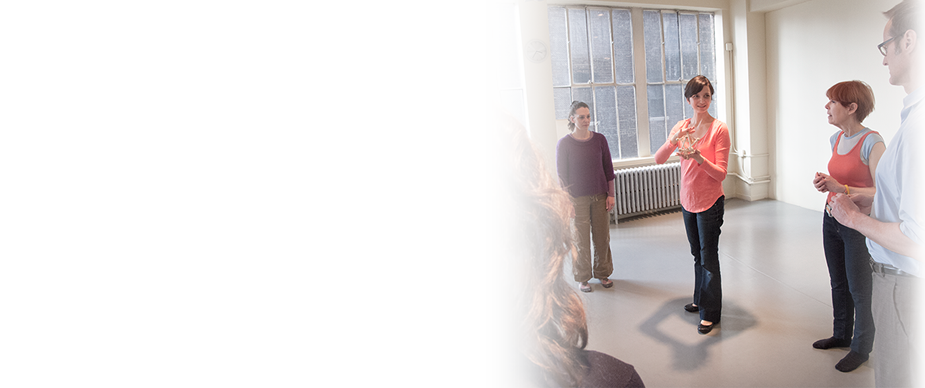10 Reasons for which I am Grateful for Teaching the Alexander Technique
/Following up on a blog post from 2 years ago on why I am grateful for the Alexander Technique, here's why I'm grateful for the opportunity to teach it.
Happy Thanksgiving!
1. I meet interesting people - My students have ranged in age from under ten to over eighty, are a pretty even gender split, and have interests and professions that run the gamut from a construction worker on the original World Trade Center, to actors and fine artists, business executives, educators, entrepreneurs and librarians. They come for various reasons such as improving their posture to alleviate back, neck, and shoulder pain, reduce stress, improve confidence, stand tall on their wedding day, become active again following an injury, to avoid strain during pregnancy, or because of scoliosis. They all have one thing in common, which is the desire to change in a way that will stick.
2. Recognizing that common problems can have simple solutions - Most adults and even older children and adolescents have developed habits that lead to postural imbalances, leading to pain, discomfort, shallow breathing, and sometimes they feel ungrounded and awkward. The list of problems that may be tied to poor posture could go on and on. It takes some practice, but the simple solution of coordinating the body in an integrated way, starting with undoing compression in the head, neck, and back is groundwork for resolving any issue related to poor posture, compression, and strain in the body.
3. Cool (and festive) socks - No special attire necessary when you come for Alexander Technique lessons, but I do ask my students to take off their shoes for the portion of the lesson that involves lying on a table. It's a rare opportunity to show off your coolest socks that would otherwise be hiding in your shoes all day, invisible to your co-workers. So break out your snow flakes, jingle bells, and Santa Clauses.
4. It improves my posture and feels good - Shhhhhh!!! It's a secret. Teaching the Alexander Technique means practicing it yourself. If I've taught a lesson well, my posture should improve and I should feel more relaxed, energized, springing, and present after teaching a lesson. Teaching a lesson should feel very similar to having a lesson (but you didn't hear it from me!)
5. I'm a better explainer - How do you explain an experience to someone that might seem new and unfamiliar? During lessons, I'm helping students directly with my hands, so that I can show them how to coordinate their body differently, but I'm also engaging their thinking by talking and my goal is to connect the verbal instructions I'm giving to something that is familiar to them. I never give the same first lesson or first class, because there's no cookie-cutter way of explaining the same thing to two people or groups of people.
6. I no longer feel like I want to fix everyone's posture on the street, subway...at Thanksgiving dinner - This one is for all of my students who have asked me if it drives me crazy to look at peoples' poor posture all day. Am I not just itching to fix it? No, I'm not, but I understand the question. When I first started taking lessons and I suddenly started noticing how most people were holding themselves, it was like putting on glasses for the first time.
7. I don't lift weights, I lift legs - Nothing wrong with lifting weights if you do it without compressing your lower back. After a full day of lifting legs (not my own, other people's), not only do people say that their legs feel longer and their hip joints freer, but I've saved myself a gym membership.
8. Seeing the same thing in a billion unique ways - What really got me interested in the Alexander Technique from the get-go was that it was about addressing common issues by looking at it from point of view of how we function as vertebrates. I address how the body functions in a unified way and how poor posture interferes with that functioning. I'm looking at the same fundamental concepts with all of my students, but each of their lessons may seem very different because each person manifests a rather universal human issue in very different way.
9. Witnessing the discovery - There is usually a moment or many of them during a lesson or between lesson when people who study the Alexander Technique reach some sort of "Ah-ha" that leads them to see that things can be different ... that they don't have to always be in pain sitting at their desk, in discomfort when walking or that they don't have to tense their shoulders and neck every time they speak in a meeting. It is possible to do the things that we do every day without strain.
10. Guiding the journey to trade in habit for choice - It's our habits that get us into postural trouble and sometimes my students realize what their habits are. Sometimes they don't. Regardless, they usually don't know how to change them and through lessons they learn how to. What they learn becomes a skill that they can take into everything they do.






